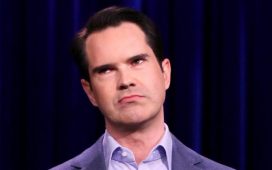Stock markets in Europe extended their losing streak on Thursday and oil prices fell 3% to below $58 a barrel as mounting recession concerns continued to hit investor confidence.
The index of Britain’s top 100 firms dropped more than 1% to hit a six-month low and and stock markets in continental Europe also dipped in response to investors channelling their funds into financial safe havens. However, US stocks staged a modest recovery after heavy sell-offs on Wednesday.
The FTSE 100 ended Thursday down 1.1% at 7,067, its lowest level since February, while the German Dax fell 0.7% and the French CAC 40 shed 0.3%, dragging European markets to a six-month low. Earlier in the day the Nikkei 225 fell 1.2% in Tokyo.

What is the yield curve?
This is the line plotted on a graph that shows the rate of return on government bonds to their date of maturity.
Government bonds – known as gilts in the UK, treasuries in the US and bunds in Germany – are debt issued over a fixed period of time, typically three months, two years, 10 years and 30 years, to fund government spending.
The yield is the rate of return investors receive. Maturity is when the government repays the debt at the end of the term. When more investors are buying government bonds prices go up, and yields drop.
Companies can also issue bonds.
What happens when the yield curve inverts?
This is when the yield on short-term bonds is higher than on long-term bonds. It means that traders are accepting a lower interest rate to hold longer-dated bonds than the shorter-dated alternative.
It’s relatively rare – investors typically get higher returns for lending over the long term, as this is seen as riskier than short-term lending. They also expect to be compensated for the impact of inflation, which will eat into investments over time.
What does it mean?
An inverted yield curve is a classic signal of a looming recession – in the US, the curve has inverted ahead of every recession over the past 50 years. It falsely signalled a recession just once, at the time of the 1998 Russian financial crisis.
For other countries the signal is less clear. Several have experienced long periods of inverted yield curves without a subsequent recession, notably the UK in the 1990s.
Why is it happening now?
The yield curve for two- to 10-year US government bonds has inverted for the first time since 2007, just before the start of the global financial crisis. This indicates that investors are seriously worried about an economic downturn, which would keep inflation low. They are worried about the impact on the already-weak global economy of the prolonged trade war between the US and China, along with Brexit.
Is recession inevitable?
No, but it is highly likely. And an inverted yield curve driven by recession fears risks becoming a self-fulfilling prophecy, knocking confidence and causing businesses to cut back on investment.
How soon does recession tend to follow yield curve inversion?
Previous downturns show that yields have typically inverted 18 months, on average, before a recession began. Julia Kollewe
A dash to safety meant the US bond yield curve inverted for the second day running. Not since 2007 has the 10-year Treasury bond traded at a lower interest rate than two-year loans, indicating that investors believe a US recession is imminent. Gold, which has rallied when worries about the global economy have grown, also proved attractive, adding 40 cents to $1,528.20 per ounce.
While the economic news was universally bad earlier in the week, with figures showing Germany heading into recession and China slowing faster than expected, the latest figures from the US released on Thursday contained enough good news to lift investors. Although US industrial production shrank last month and jobless benefits claims rose, they were offset by strong consumer spending in the world’s largest economy.
The mixed messages from the US economy appeared to strengthen the stance of analysts who dismissed concerns of an imminent recession. Andrew Feltus, high yield co-director at the Boston-based investment manager Amundi Pioneer, said the corporate sector in the US was growing strongly but the worrying signs of weak growth could be found in a broader global slowdown.
“The US is still in pretty good shape but the rest of the world is teetering,” he said. US investors paused for breath on Thursday after the midweek sell-off, with the Dow Jones Industrial Average, which lost 800 points as it declined 3% on Wednesday, edging up 99 points by the close of trading and the S&P 500, which fell 2.9% on Wednesday, rising 0.2%.
US markets were buoyed by consumer spending figures released on Thursday that showed Americans spending more at retail stores and restaurants in July, in a sign that consumer confidence remains positive, despite falling business confidence.
Retail sales in the US rose a healthy 0.7% last month after a 0.3% gain in June, the commerce department said. Walmart, the world’s largest retailer and a bellwether of US retail confidence, reported sales gains, lifted in part by brisk online grocery deliveries.
The retail figures may allay some concerns about the potential for a recession that would end the 10-year US recovery, the longest on record. Consumer spending makes up the bulk of US economic growth and consumers have been carrying the world’s largest economy recently amid worries that businesses will pull back on their spending because of all the uncertainty created by the trade war.
Other economies are slowing as the dispute between the US and China puts the brakes on manufacturers around the world. Markets have been hit by weak data from China and Germany this week, driven by poor industrial numbers, while the threat of a no-deal Brexit also threatens to destabilise the global economy further.
Despite the strong US data on Thursday, the yield curve inversion has disturbed investors, nonetheless, because such a bond market move has presaged every US recession in the past 50 years. “The countdown to a recession has just started,” said Hussein Sayed, the chief market strategist at FXTM, a currency trading platform.
Fiona Cincotta, a senior analyst at City Index, which bets on market movements, said: “The fact is that no one actually knows what is next for the markets. However, the signs flashing from the markets are not great.”













